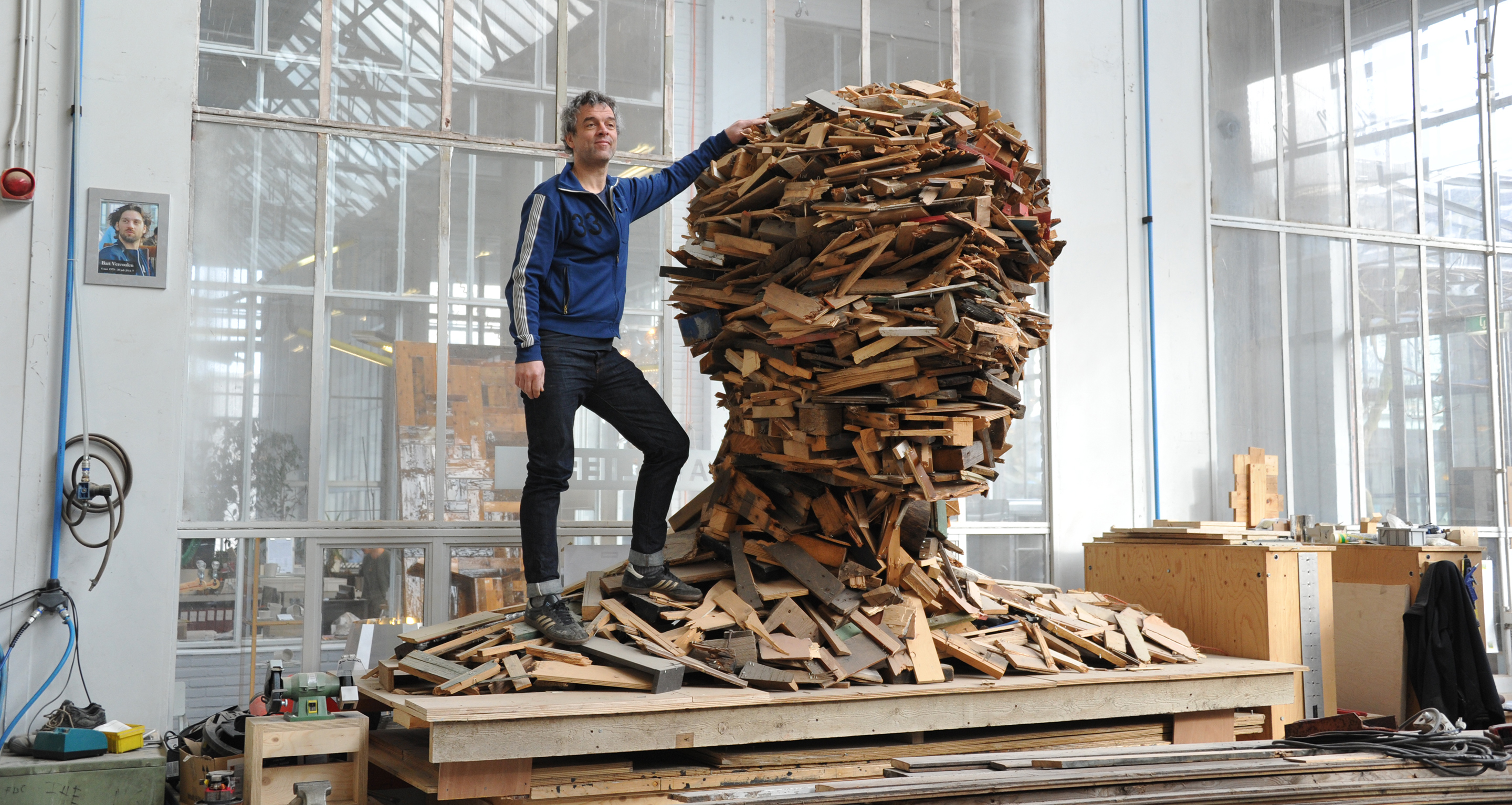Piet Hein Eek, one man and his workshop
Published on 16 January 2021

Artisan, designer and architect, Piet Hein Eek was already an ecologist thirty years ago without even knowing it, making him a true visionary.
Piet Hein Eek works out of an industrial wasteland in Eindhoven, having set up his office in the premises formerly owned by Philips, the undisputed jewel in this southern Dutch city’s industrial manufacturing crown. Over the past few years, this vast neighbourhood, known as the Strijp-R, has been totally metamorphosed and become the beating heart of Dutch design. Hein Eek occupies a 10,000 m2 space that not only houses his studio and workshop, but is also a hotbed of inspiration. Around one hundred people are employed at the buzzing site, with some fifty working in the factory. There’s a shop, where his own designs sit side-by-side with other artists’ creations and vintage pieces, an art gallery, an exhibition space, a restaurant and even events rooms. In January, he’ll fulfil a lifelong dream by opening a 13-room rooftop hotel for which he designed every last detail himself, right down to the door handles and toilet pulls. The wall colours have been created in conjunction with Vliegenthart, a brand that’s over one hundred years old, whilst the beds have been specially designed with a helping hand from Auping. Every single room will serve as the backdrop for an artist’s work.
The majority of the Dutch designer’s creations are produced on-site, where everything is hand-crafted in very small quantities. Piet Hein Eek is a design artisan. He boasts an instantly identifiable style that enjoys global recognition. He first came onto the design world’s radar back in 1989 with the final year project for his degree, which saw him turn pre-used wood from building sites into furniture. His “Scrapwood Creations”, as they’re called, give marquetry a thoroughly modern spin, with each plank of wood retaining its original hue and patina prior to being varnished. Eek also happily turns his hand to metal, ceramics, glass and recycled plastic. He is capable of crafting a club chair from railway sleepers. “Holland has always been into recycling,” he explains. “When buildings are destroyed, the materials are always given a second lease of life. They’re often used outdoors, like for these chicken coups, for example! When I chose this particular production method back in 1989, it was mainly because it was inexpensive. People said it was highly creative, avant-garde.” And they weren’t wrong. Working with recycled materials, not to mention using artisan techniques, proved to be truly visionary. The 1990s witnessed the emergence of a new wave of Dutch design, with names such as Richard Hutten, Hella Jongerius (both graduates of the Eindhoven Design Academy like Piet Hein Eek) and Marcel Wanders bursting onto the scene. The design house Droog Design, which was founded at around the same time, gave them the opportunity to connect.
Eek’s trademark style celebrates imperfections and one-of-a-kindness, as showcased in each of his handcrafted creations. The fifty-something cites the Dutch Arts & Crafts movement as one of his references, as well as admiring the De Stijl artistic movement, to which architect and designer Gerrit Rietveld belonged. His inspiration is primarily industrial, as it draws on the raw materials used. “Today, I guess you could say anything’s possible in design. Modern production methods have no limits. I have a different take on things. I solely design with what I have available, and only to meet a client’s specific needs. On top of that, I only use the talent that is available in my workshop at that precise moment in time. I don’t see the point in looking to satisfy inexistent needs or using materials that come from miles away. Our approach is amazing for our environmental footprint.” In his factory, stacks of materials are piled up waiting for “their” time to come. His office, which is bursting at the seams, is positioned right in the heart of the space and the place where he spends his days drawing and writing. Storytelling and design are inseparable in his eyes. “I’m less focused on what my designs will look like than the tale they have to tell. There’s always a story behind whatever I do.” His hotel, his metal kitchens, his furniture, the next bakery he’s fitting out, his country home in the Dordogne - they’re all stories related by Piet Hein Eek himself via his website blog. A clever way of imbuing his work with an eminently more human touch.